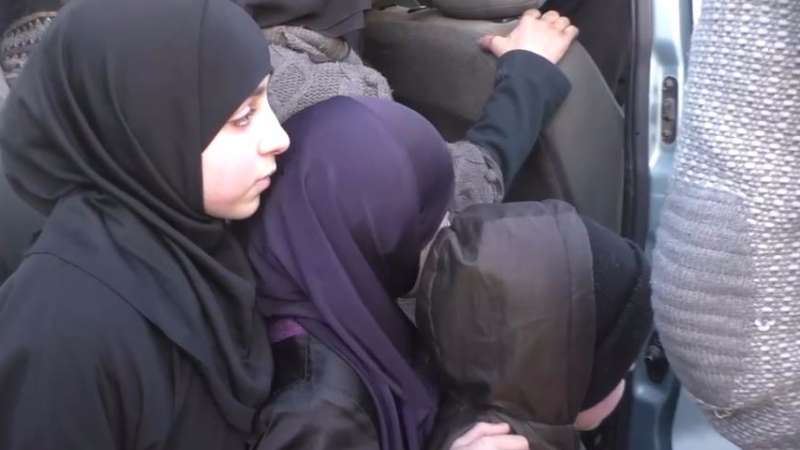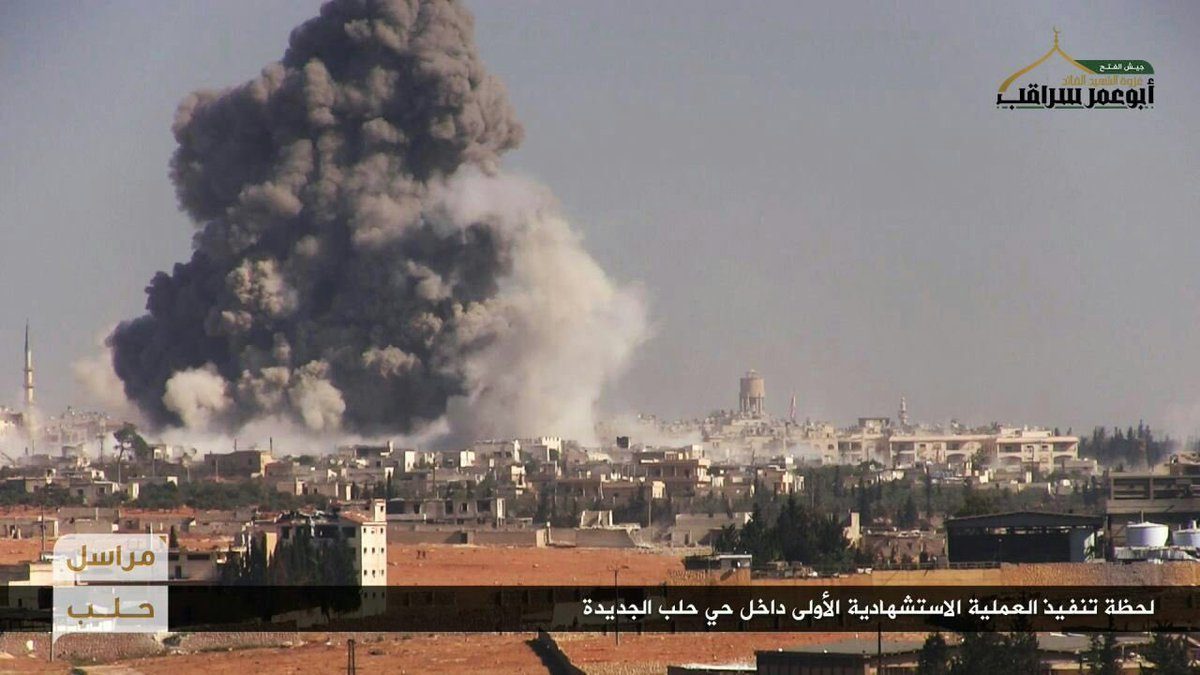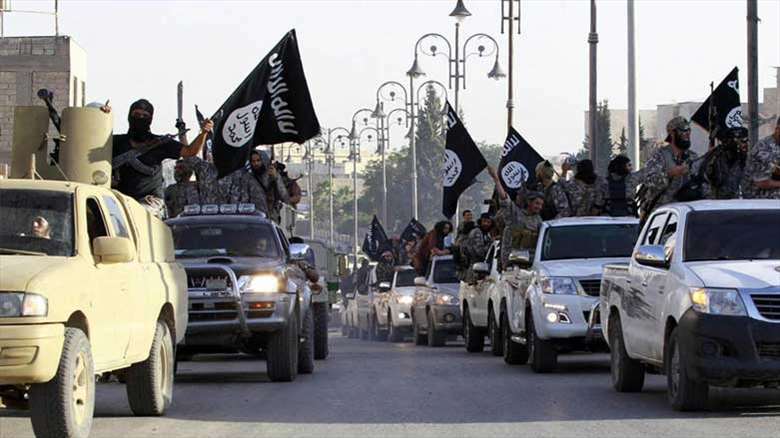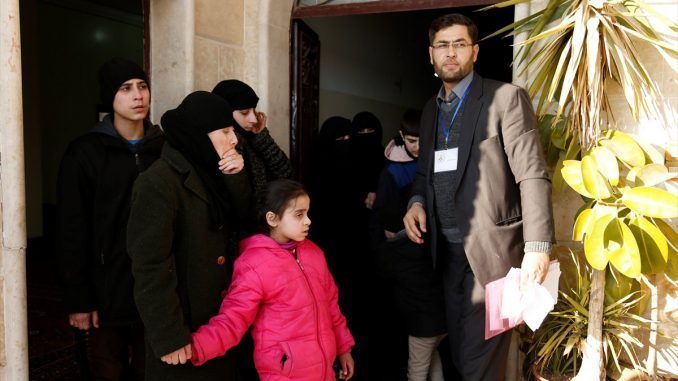
The Assad regime and rebel groups swapped dozens of women prisoners and hostages, some of them with their children, in Syria’s Hama province on Tuesday evening in a rare incident. Some of the women have been held since 2011.
The Syrian Observatory for Human Rights said that regime representatives and rebels exchanged 112 people, including 24 children, in the rebel-held Qalaat al-Madiq town in rural Hama. Many had been detained for years.
About half the women were released from government prisons and then taken to opposition-held areas, the Observatory said.
In return, the others, along with three unidentified men, were set free by various rebel groups and shuttled to government-controlled areas along the coast.
This kind of exchange was rare in the past, but had been occurring more often in recent months, the Observatory said.
Mohamad Rasheed, a spokesman for the Jaysh al-Nasr rebel group based in Hama, said a civilian committee that negotiates such exchanges with the government oversaw the swap on Tuesday.
The prisoners on both sides included children, he said, and “some of the women had given birth while detained”.
Held since 2011
Most of the hostages released by rebels were from the coastal Latakia province, the heartland of Assad’s minority Alawite sect, and had been held since 2013, Rasheed said.
Some of the prisoners set free by the government had been detained since the start of the uprising in 2011, he added.
Jneid said that some of the women were sentenced to life, without a proper trial.
Sharbaji was arrested when she went to get a passport, as a way to put pressure on her husband who was active during the 2011 revolution.
In 2016, US Ambassador to the UN, Samantha Power named Sharbaji was one of the 20 women who are political prisoners in the ‘Free the 20’ campaign.
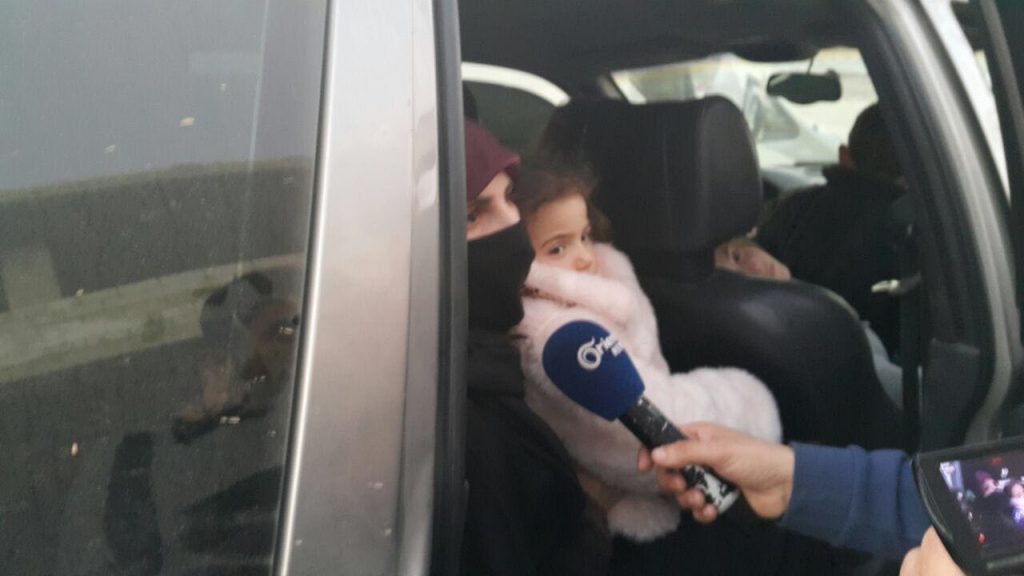
Assad’s dungeons of torture
Tracking the number of people in detention is also difficult. Assad’s “security forces” have converted sports stadiums, abandoned homes, hospitals and schools into jails. Loyalist militias from Iraq, Lebanon and Iran also operate their own secret sites. At least 200,000 people are thought to remain in detention, most of them in regime facilities that are closed to the International Committee of the Red Cross.
Those in the prisons underwent daily routines of brutal torture that led in many cases to horrible death.
The scale of the killing carried out inside Assad’s torture dungeons is difficult to gauge: human-rights groups say the regime has tortured to death or executed between 17,500 and 60,000 men, women and children since March 2011. The dead, often buried in mass graves or incinerated, are rarely returned to their relatives. The official death certificates that are sometimes handed to relatives typically say that the victims died from natural causes.
What little is known about Assad’s torture machine comes from survivors swapped in prisoner exchanges or released after bribing officials. Relatives of the dead, defectors and hundreds of thousands of regime files smuggled out of the country by activists add to their accounts. Together, they paint a picture of a regime that has tortured and murdered on an industrial scale to silence dissent.
A forensic photographer working for Assad’s military police force photographed the bodies of more than 6,000 people killed in regime detention facilities between 2011 and 2013. The images show rows of naked, emaciated corpses with numbers written on their foreheads. Most bear signs of torture. Smuggled out of the country on flash drives, these images provide some of the most damning evidence of the regime’s systematic use of torture.
There is little that can be done to bring Assad and his thugs to justice. The UN says the regime’s use of torture and the “mass death of detainees” inside its prisons amount to crimes against humanity. Yet rights groups say that the UN, in its drive to negotiate an end to the conflict, has largely ignored the regime’s atrocities. The Security Council’s last attempt to refer Syria to the International Criminal Court failed when Russia and China objected.
The Syrian crisis began as a peaceful demonstration against the injustice in Syria. Assad regime used to fire power and violence against the civilians and led to armed resistance. 450.000 Syrians lost their lives in the past five years according to UN estimates, and more than 12 million have lost their homes.

